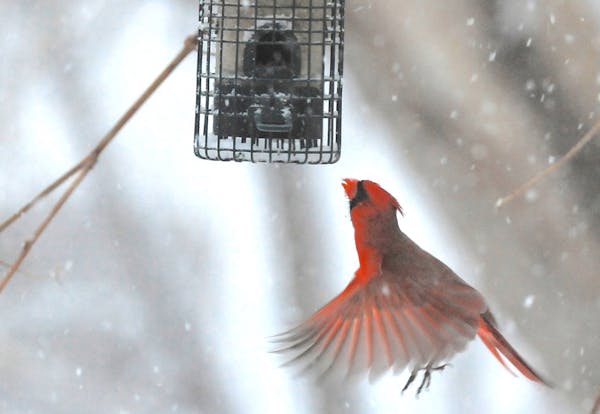In the bird world, there's no such thing as down time, no kicking back or chilling out. Being a bird is a dangerous and energy-expensive business, with some big new task always on the horizon.
Summer is busy with raising a brood of youngsters and getting them launched into the world. Next on the calendar is molting, replacing their plumage with sturdy, fresh feathers for winter. Many bird species also add to their downy base layer to help hold body heat.
Both raising young and molting are major drains on a bird's energy budget, but an even bigger one lies ahead — surviving winter.
Many fewer birds are in the woods and in our backyards after the majority migrated to warmer areas, and those that do remain are in for a tough season. Getting through winter requires large stores of endurance, resilience and luck.
I think most of us don't give much thought to the effort that birds put into surviving each winter day. The fact that we can observe birds going about their daily lives outside our ice-rimmed windows doesn't mean that winter isn't life-threatening or that birds don't have to throw everything they've got at the cold.
Serious business
After a night spent huddled up in a tree hole or clinging to a conifer branch, birds emerge in the morning desperate for calories to keep their metabolisms racing in high gear. Most songbirds maintain an internal temperature of around 104 degrees, and this requires large and regular inputs of food.
According to naturalist Donald Stokes, "Relatively few bird species have adapted to survive winter in the North, and their most important adaptation may well be the ability to find food."
Winter's birds have to be masters of foraging out in nature, and chickadees are at the top of the class. They cling to twigs and bark, searching for sleeping spiders and insect larvae. They roam a feeding territory, which may include our bird feeders, on a regular basis, snatching up whatever's available. Weighing less than a third of an ounce, chickadees need to be about 11% fatter by nightfall, then they burn that fat layer as they shiver all night to generate heat.
A number of birds hide food in scattered spots to retrieve later in the winter. Chickadees do this, as do blue jays and nuthatches. Studies have shown that a chickadee remembers where it has stored each bit of food, its hippocampus growing by about 30% each autumn precisely for this seasonal task (and then shrinking each spring).
Feeders are a boon
Cardinals are ground feeders but have learned to visit feeders for seeds and suet, while hairy, downy and red-bellied woodpeckers peck at and drill into trees for insects but also are regular visitors to feeders stocked with peanuts and suet. Brown creepers spiral up tree trunks in their hunt for insect larvae, while nuthatches spiral down the trunk, each bird finding items the others may have missed.
A number of readers express concern that bird feeders may make birds dependent on human handouts, but this doesn't happen. Birds flock in to feeders because they are a "resource patch," providing easy, quick calories. But birds continue to circulate along their feeding routes each day, never putting all their eggs in one basket.
In wintertime, feeders are a boon to birds, not a crutch. Each peanut, nutmeat and suet bit helps a bird survive the day. And that's what it's all about in wintertime, consuming enough calories to survive the cold nights, then waking up to do it all over again.
The next time you look out the window at a little junco hopping over the frozen ground, a blue jay snatching a peanut or a brilliant cardinal perched on a snowy branch, you might offer a salute to valiant creatures who put it all on the line, every single day.
St. Paul resident Val Cunningham, who volunteers with the St. Paul Audubon Society and writes about nature for local, regional and national newspapers and magazines, can be reached at valwrites@comcast.net.
Chasing 'Twisters' and collaborating with 'tornado fanatic' Steven Spielberg

